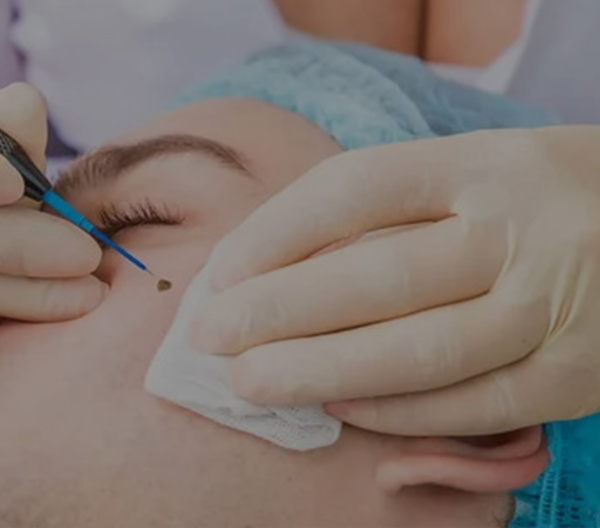Warts are generally harmless and often disappear on their own over time, but they're unsightly, and some, like those found on the soles of the feet, can make walking and exercise painful. Wart removal can be a challenge, but fortunately, the most effective treatments are the least invasive.
Warts grow in the epidermis, the upper skin layer. A typical wart has a raised, rough surface. Some, like those on the face, may be smooth and flat. The center of a wart may be flecked with dark dots; these are capillaries that supply it with blood.
The single cause of warts is a virus called Human papillomavirus (HPV) as mentioned earlier. HPV enters the circulation through wounds or from skin-to-skin contact. It leads to the formation of warts by excessive production of keratin that leads to its buildup. Keratin is a protein that is located on the top layer of our skin. As a result, the wart seems hard and thick.
Warts can be caused by a variety of HPV strains. HPV is very infectious and may spread from person to person. Constant use of public restrooms, sharing footwear, clothing, or any contact with someone/something (infected inanimate objects) who already has a wart increases the likelihood of getting one. Other regions of the body might also develop warts if you already have an existing one.

Raised, rough surface, sometimes with dark specks; light-colored to gray-brown. Found mostly on the hands, but may appear anywhere. Those under or around the fingernails and toenails can be hard to treat.
Rough, spongy surface kept flat by walking; gray or brown with dark specks.Found only on the soles of the feet. Clustered plantar warts are called mosaic warts.
Flat or slightly raised; smooth and pink. Smaller than other warts.Found mostly on the face, hands, and shins. They're less common than other warts, but when they do appear, it's often in large numbers.
There are warts with a long thread-like growth, seen commonly over the nose area and face.
present in the oral cavity over the lips and mouth.
Wart Removal Treatment in Hyderabad is available with Dr. Sai Sandeepthi at The Eudermiz Skin and hair clinic.
If the warts are hard-to-treat, our dermatologist may use one of the following treatments:
Laser treatment is an option, mainly for warts that have not responded to other therapies. Before laser treatment, the dermatologist may numb the wart with an anesthetic injection (shot).
When flat warts appear, there are usually many warts. Because so many warts appear, dermatologists often prescribe "peeling" methods to treat these warts. This means, you will apply a peeling medicine at home every day. Peeling medicines include salicylic acid (stronger than you can buy at the store), tretinoin, and glycolic acid.
The dermatologist may inject each wart with an anti-cancer medicine, bleomycin. The shots may hurt. They can have other side effects, such as nail loss if given in the fingers.
This treatment uses the patient’s own immune system to fight the warts. This treatment is used when the warts remain despite other treatments. One type of immunotherapy involves applying a chemical, such as diphencyprone (DCP), to the warts. A mild allergic reaction occurs around the treated warts. This reaction may cause the warts to go away.
Another type of immunotherapy involves getting shots of interferon. The shots can boost the body’s immune system, which gives the body the ability to fight the virus.
Unfortunately yes, There is no cure for the wart virus. This means that warts can return at the same site or appear in a new spot.
Sometimes, it seems that new warts appear as fast as old ones go away. This happens when the old warts shed virus cells into the skin before the warts are treated. This allows new warts to grow around the first warts. The best way to prevent this is to have your dermatologist treat new warts as soon as they appear.
Dr. Sai Sandeepthi is a certified dermatologist who is trained extensively in dermatology and aesthetics. At the Eudermiz clinic, all your skin-related concerns are addressed in detail, under one roof. The Eudermiz clinic is a one-stop solution for all your skin concerns.
Situated at a prime location. The Eudermiz clinic offers treatments that are not only effective and highly successful but also pocket friendly. The positive ambiance of the clinic induces a sense of optimism among the patients and helps them in undergoing extensive procedures.
